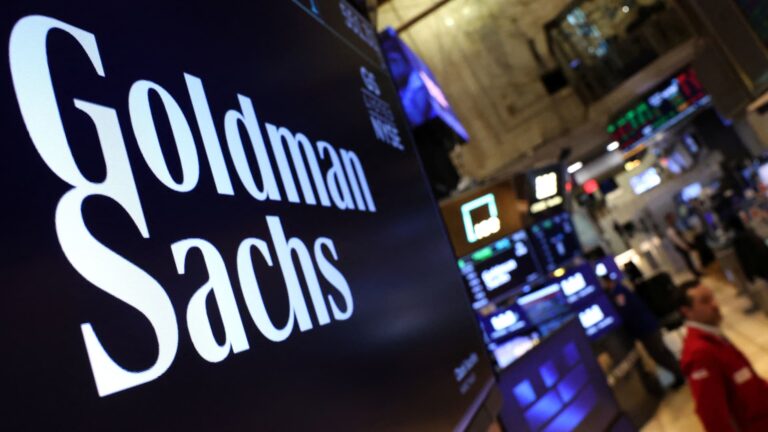The market is awash with talk of artificial intelligence (AI) – corporates are rushing to outline their strategies, cash is flowing to AI-related stocks, and the race is on to develop sovereign AI supply chains. Investors have flocked to technology firms taking advantage of and enabling AI’s development, sending their share prices soaring. U.S. stocks have hit repeated record highs over recent weeks, with the tech-heavy Nasdaq Composite up over 27% over the last 12 months. With all this comes fears of a bubble, often equated to the dot-com boom and bust . Big-name investors and banks appear split on whether a bubble is here, and Goldman Sachs has placed its bet on “no” — for now. Historically, Goldman says bubbles tend to be driven by a specific innovation, investors pile-in, there’s a rush of capital and competition from new companies, which in turn pushes up prices and valuations, increasing systemic risks. “There are elements of investor behavior and market pricing currently that rhyme with previous bubbles, including the rise in absolute valuations, high market concentration, increased capital intensity of leading companies and the emergence of vendor financing,” strategists at the bank wrote in an Oct. 8 note. “However, we see key differences.” Despite this, the bank warned investors to diversify, amid high levels of concentration in the market and increased competition in the artificial intelligence space. “There are good reasons to diversify portfolio exposures to offset the concentration effect but it does not necessarily point to an excessive bubble,” it wrote. Not yet in bubble territory? Rising value in the tech sector has been driven by “fundamental growth” rather than “irrational speculation about future growth,” the Goldman strategists said, adding that firms leading the industry with strong returns typically have healthy balance sheets. The sector is dominated by large incumbents such as Meta , Microsoft , Google , and Nvidia , which is another reason Goldman isn’t worried for now. “Bubbles tend to develop when there is a combined surge in stock prices and valuations to an extent that the aggregate value of companies associated with the innovation exceed the future potential cash flows that it is likely to generate,” the note said. However, the strategists noted that the Magnificent 7’s aggregate value in 2025, when looking at the firms’ forward price-to-earnings ratio, is just over half of tech giants’ aggregate value in 2000. “Valuations of the technology sector are becoming stretched … but not yet at levels consistent with historical bubbles,” they added. The Goldman Sachs note comes days after the bank’s CEO David Solomon warned that stock markets were due a “drawdown” in the next year or two. “Markets run in cycles, and whenever we’ve historically had a significant acceleration in a new technology that creates a lot of capital formation, and therefore lots of interesting new companies around it, you generally see the market run ahead of the potential … there are going to be winners and losers,” he said at Italian Tech Week in Turin, Italy, on Friday. Billionaire hedge fund manager Paul Tudor Jones , meanwhile, said he expects a powerful surge in stock prices before the bull market tops out. “My guess is that I think all the ingredients are in place for some kind of a blow off,” Jones said Monday on CNBC’s ” Squawk Box .” “History rhymes a lot, so I would think some version of it is going to happen again. If anything, now is so much more potentially explosive than 1999.” Fears of a bubble have led investors to look to so-called safe havens, with gold seeing its price soar to $4,000 an ounce for the first time ever on Tuesday. — CNBC’s Yun Li contributed to this report.

